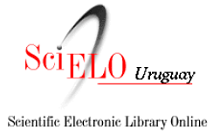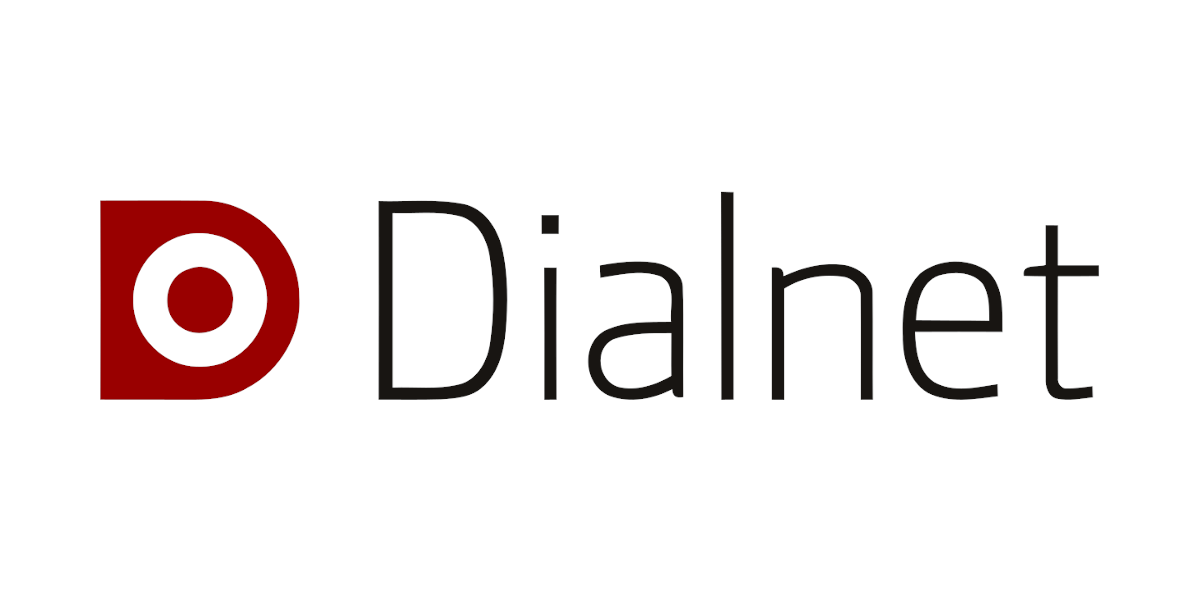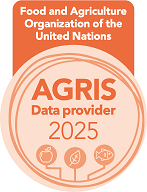Seguinos en:
Submissions
Submission Preparation Checklist
As part of the submission process, authors are required to check off their submission's compliance with all of the following items, and submissions may be returned to authors that do not adhere to these guidelines.- The contribution must be original and unpublished. A signed note from the corresponding author must be attached to the submission, stating that they are responsible for the content of the work and that it has not been published or simultaneously submitted to any other journal.
- The submission file must be in Microsoft Word or RTF format, and images must be in JPG or PNG.
- The text must adhere to the stylistic and bibliographic requirements outlined in the Author Guidelines.
Author Guidelines
General Rules
Articles are accepted in Spanish, Portuguese, or English. In all cases, they must include an abstract and keywords in English, Spanish, and Portuguese. The text must be in "DOC," "DOCX," or "RTF" format. It should have a margin of 2.5 cm on each side, in Times New Roman font with 12-point characters, a line spacing of 1.5, and continuous line numbering. The length should not exceed 7,500 words for original articles, 3,500 words for technical notes, and 9,000 words for reviews.
Originality Note for the Editor
Articles must be original and unpublished. The main or corresponding author must attach a signed note with their contact number and email, indicating that they are responsible for the content of the work and that it has not been published or simultaneously submitted to any other journal, except in a preliminary format, such as conference abstracts, theses, symposia, or workshopsa.
Types of Articles
Without prejudice to the author's request, the Editorial Board will classify received manuscripts into: Original Article, Technical Note or Case Report, Review.
Original Articles
This is a publication of a research study that describes original results and contains sufficient information for another researcher to evaluate the observations, repeat the experiments, and verify the conclusions. The text must express the scientific rigor of the work with logic, clarity, and precision, with a maximum length of 7,500 words and supported by essential bibliographic citations.
Technical Notes or Case Reports
These are concise but complete works that describe limited research or reports, or that result from the combination of a specific result viewed in a different context with a novel interpretation. Initial diagnoses or case reports may be included in this category of work. The content must be of sufficient interest to warrant publication. The text, expressed logically, clearly, and concisely, should not exceed 3,500 words and will follow the same format as original articles.
Review
Review articles should cover topics related to the scope of the journal and that are of current interest. They will consist of a systematization of existing information on a topic and a critical analysis by the authors. The text, expressed logically, clearly, and precisely, must be supported by recent international literature and have a maximum length of 9,000 words. Authors must have proven experience in research in the knowledge area of the review. They can be submitted by the authors or by invitation from the Editorial Board.
Writing Guidelines
Title
The title should be brief and clear, accurately reflecting what the work contains. It should be written in lowercase, avoiding the use of abbreviations. The title must be included in Spanish, English, and Portuguese.
Authors
Names should be written directly: first names followed by surnames. Full name (or full first name) and surname of the authors. Following the name, on the same line, the ORCID identifier should be included. If not available, register at https://orcid.org/. Below the names, in a new paragraph, the affiliation with the name of the institution to which they belong should be included. The corresponding author must also include their email address.
Example: Laura Vidal¹ 0000-4560-7890-123X
José Gómez² 0001-4277-9999-1000
¹ Department of Cattle, Faculty of Veterinary Sciences, Buenos Aires, Argentina.
² Department of Cattle, Faculty of Veterinary Medicine, University of the Republic, Uruguay. Corresponding author: jgomezp@fvet.edu.uy
Abstract
The abstract should provide a clear and precise idea of the article's content, containing (without subtitles). It must not exceed 300 words. It should be written in an impersonal form, in a single paragraph and in the past tense, except when conclusions are mentioned, which should be in the present tense. It is important not to change the content from one language to another: the Abstract must have the same content as the summary in Spanish, written in correct English, and the Resumo must have the same content as the summary in Spanish, written in correct Portuguese.
Keywords
Following the summary in Spanish and on a separate line, the legend Keywords: (maximum five, separated by commas) should be included, obtained from the overall text of the article. Keywords are used to facilitate retrieval in searches performed on indexing platforms, so it is suggested to avoid including words contained in the title of the work. It is important not to change their meaning from one language to another: following the summary in English and on a separate line, include Keywords: written in English, and following the summary in Portuguese and on a separate line, include Palavras-chave written in Portuguese.
Tables
Tables must have a title that is self-explanatory at the top and a correlating identification number corresponding to the text in Arabic numerals (1, 2, 3, etc.). This correlating identification number, along with the word Table, will appear in the body of the article each time the table is referenced (e.g., Table 1, Table 2, Table 3, etc.). The format should be simple, with horizontal lines in black, no vertical lines, and with simple horizontal lines separating the column title from the data, also in black. Footnotes may be included to explain abbreviations contained in the table, in 10-point font.
Example of title: Table 1. Variation of temperature over time
Example of footnote: T = temperature, t = time (in minutes). If the table is not original, cite the source (Author and year) in the footnote.
Authors are requested to indicate within the manuscript where each table that is part of the work should be inserted, including a line with the text “insert Table XX here.” Each table should be included at the end of the manuscript, each occupying a page and in editable text (not pasted as images).
Figures
Figures must have a correlating identification number corresponding to the text in Arabic numerals (1, 2, 3, etc.) and contain a text defining the content (caption), which includes the definition of the symbols used. Figure captions should be included in the manuscript file after the bibliography and before the tables, and must allow the figure to be self-explanatory.
Figures should be limited to the minimum necessary. If photos are needed, they must include a reference scale. In histograms or line graphs, use only black and white and differentiate bars with different patterns and dotted, solid lines, etc. Measures of dispersion (standard deviation, standard error, etc.) should be included in bar and line graphs containing data. If the figure is not original, cite the source (Author and year) in the footnote.
Authors are requested to indicate within the manuscript where each figure that is part of the work should be inserted, including a line with the text “insert Figure YY here.” All figures (both graphics and photographic images or drawings) must be presented in jpg or png formats with a minimum width resolution of 600 px and sent in separate files (one for each figure).
Equations
Equations should be submitted in the same format as figures, numbering them separately with the word “equation” followed by a number (equation 1, equation 2, etc.). The clarification of the symbols used should be included in the manuscript text, following the line where it indicates where the equation should go.
Authors are requested to indicate within the manuscript where each equation that is part of the work should be inserted, including a line with the text “insert equation ZZ here.”
Acknowledgments
Following the conclusions, there will be a section for “Acknowledgments” where the names of individuals and/or institutions and the reason for the acknowledgment must be stated. It should be written concisely and refer to materials or equipment and financial support.
Citations and References
The journal uses the APA 7th edition in English for citations and bibliographic references. Poorly referenced works will not be accepted.
Citations in the text are inserted as (author or authors, year). Examples: (Rosemberger, 1983) (González & Rodríguez, 2005). If there are more than three authors, the form et al. is used. Example: (Riet-Correa et al., 1984).
If multiple works are cited in the same paragraph, the citations should be listed alphabetically and separated by semicolons. Citations used for backing should not exceed four for each content.
References must be listed alphabetically by authors and formatted with a hanging indent in the “References” section following the “Acknowledgments.”
Examples of different types of references according to document type:
Journal Articles
Authors. (Year). Title of the article. Name of the journal, Volume(Number), page range. doi if available.
Dobson, J. M., Samuel, S., Milstein, H., Rogers, K., & Wood, J. L. (2002). Canine neoplasia in the UK: estimates of incidence rates from a population of insured dogs. Journal of Small Animal Practice, 43(6), 240-246. https://doi.org/10.1111/j.1748-5827.2002.tb00066.x
Books
Authors. (Year). Title of the book (Edition number, from the second onward). Publisher.
Rosemberger, G. (1983). Enfermedades de los bovinos (2nd ed.). Paul Parey.
Book Chapters
Chapter authors. (Year). Title of the chapter. In Editor or book coordinator, Title of the book (Edition number, page range of the chapter). Publisher.
McKeever, K. H., & Lehnhard, R. A. (2014). Physiology of acid–base balance and fluid shifts with exercise. In D. R. Hodgson, K. H. McKeever & C. M. McGowan, The athletic horse: Principles and practice of equine sports medicine (2nd ed., pp. 69-86). Elsevier.
Conferences and Symposia
Papers from conferences and symposia published as books are referenced as book chapters. When published as journals, they are referenced as articles. When unpublished, the following model is used:
Authors. (Year). Title of the presentation [Type of contribution]. Name of the conference, City, Country.
Ives, E. (2019, November 9-11). Head Trauma: A Neurologist’s Perspective [Conference session]. South European Veterinary Conference - Annual Conference. Seville, Spain.
Theses
Authors. (Year). Title [Master’s or doctoral thesis, Name of the institution]. Database name. URL
Ferrés Cáceres, I. (2019). Desarrollo, implementación y optimización de herramientas de genómica comparativa para el género Leptospira [Master’s thesis, Faculty of Science, Universidad de la República]. Colobrí. https://hdl.handle.net/20.500.12008/21484
Websites
Authors. (Year). Title. Name of the page if different from the author. URL
Ministerio de Ganadería Agricultura y Pesca. (2023). Plantas elaboradoras de alimentos para rumiantes habilitadas con Buenas Prácticas de Elaboración. https://www.gub.uy/ministerio-ganaderia-agricultura-pesca/datos-y-estadisticas/datos/plantas-elaboradoras-alimentos-para-rumiantes-habilitadas-buenas-practicas-elaboracion
Data Sets
Delciellos, A. C. (2023). Replication data for non-volant small mammals of the Serra da Bocaina National Park, southeastern Brazil: An updated species list with new data on karyotype description and phylogeny (Version V3) [Data set]. SciELO Data https://doi.org/10.48331/scielodata
Contribution Note
Each author must express their personal contribution to the work in a note that will follow the “Acknowledgments.” It must follow the established format in the Contributor Roles Taxonomy (CRT).
Example 1: Contribution Note: The author is responsible for: conceptualization, data curation, formal analysis, original draft writing, and review and editing.
Example 2: Contribution Note: All authors participated equally in all processes of conceptualization, data curation, formal analysis, original draft writing, and review and editing.
Example 3: Contribution Note: 1. Conceptualization, 2. Data curation, 3. Formal analysis, 4. Funding acquisition, 5. Research, 6. Methodology, 7. Project administration, 8. Original draft writing
Juan Luque has contributed to 1, 2, 3, 6, and 8. Andrés Núñez has contributed to 1 and 2. Francisco Segovia has contributed to 1, 3, 4, 5, and 6.
For further roles, visit https://credit.niso.org/
AI Usage Statement
The use of artificial intelligence is authorized in the writing process with the aim of improving the readability of the manuscript, always under appropriate human supervision. Authors are responsible for the outcome.
If this tool is used, a note should be included, following the example:
AI Usage Statement: The authors used and supervised the use of the tool [Name of the tool] for the writing process of the manuscript and are responsible for the content.
Data Availability
In original articles, after the contribution note, it must state whether the data supporting the research are available. If so, the location must be indicated using the legend: “Data Availability: The dataset supporting the results of this study is available at ...” If the data are not available, the legend should read: “Data Availability: The dataset supporting the results of this study is not available.” Works that have their data available in repositories must cite and reference them in their article.
Privacy Statement
Names and email addresses entered in this journal will be used exclusively for the purposes set out in it and will not be provided to third parties or used for other purposes.
The publisher respects the provisions of Law 18.331 - Protection of Personal Data and action of Habeas Data promulgated on 11/08/2008. The right to the protection of personal data is inherent to the human person, so it is included in Article 72 of the Constitution of the Republic of Uruguay.










